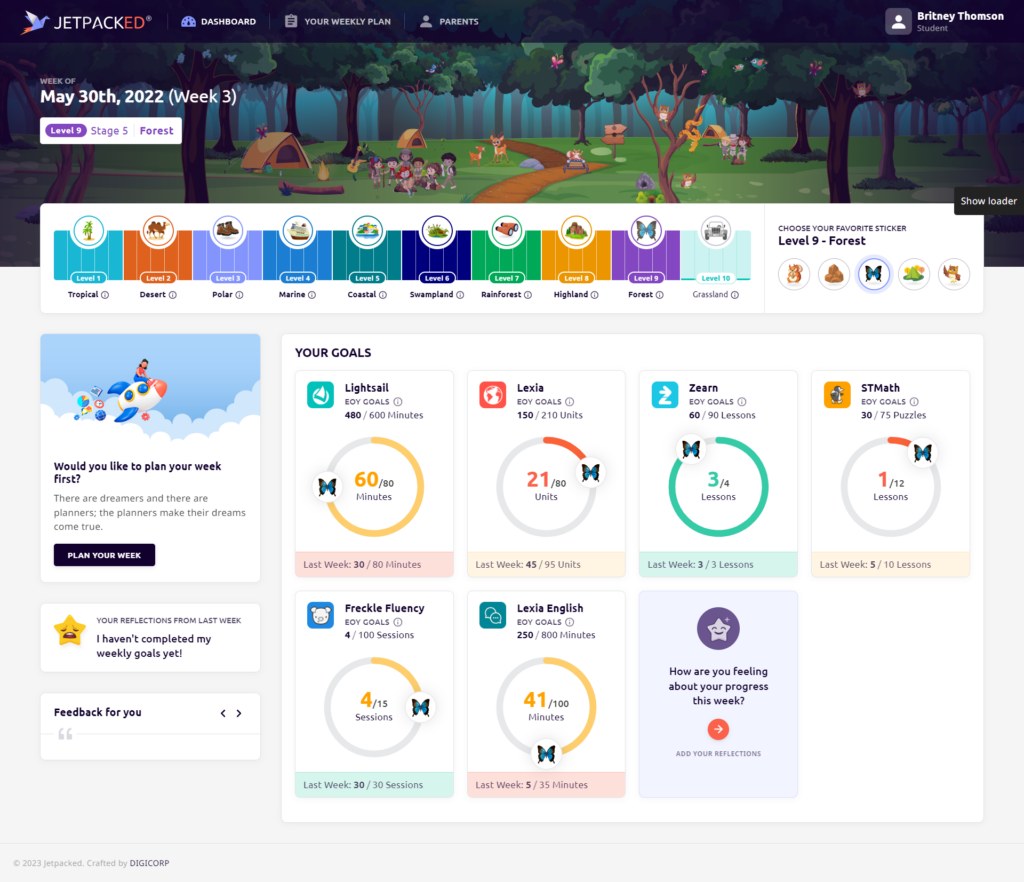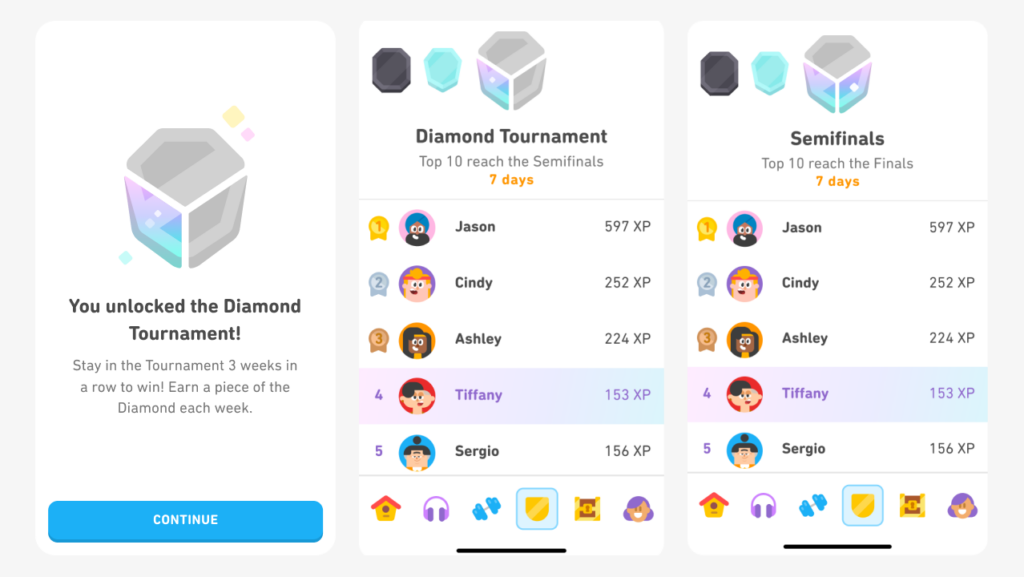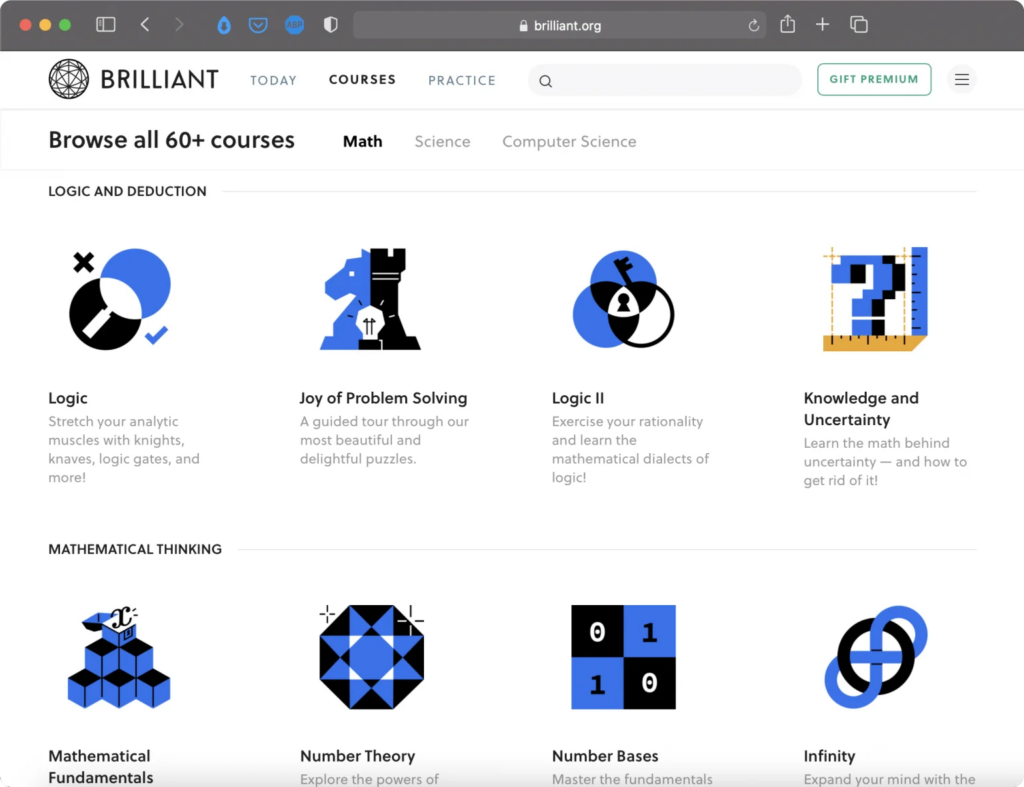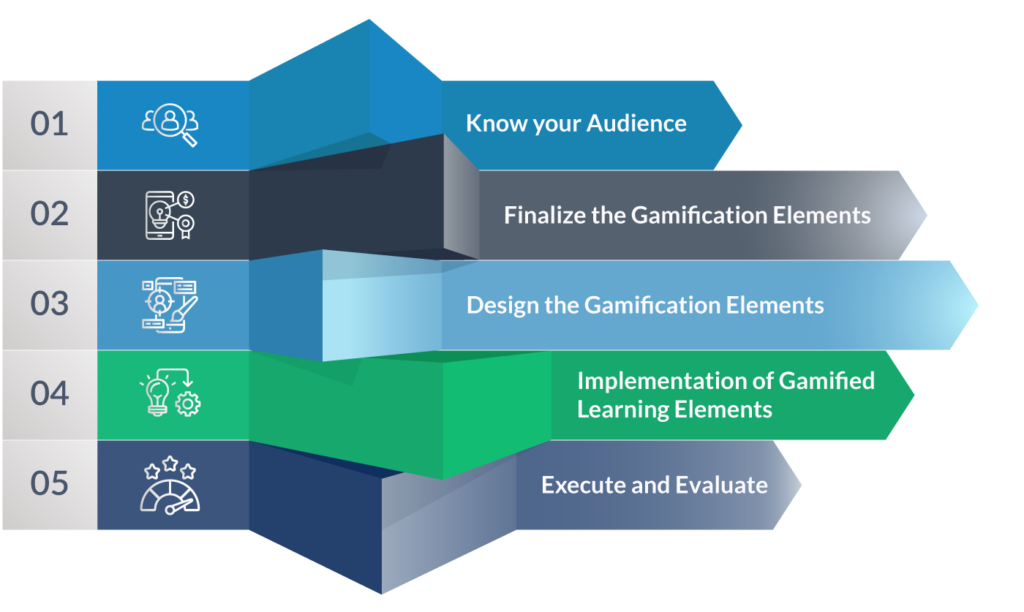Gamification in EdTech: Enhancing Online Education Through Interactive Learning
Table of Contents
With gamification, online learning becomes a rewarding and engaging experience. Interactive learning experiences motivate learners to study, learn, and achieve their goals. In terms of cognitive psychology, learning can often be stressful, boring, and confusing if delivered through static methods. In this scenario, lessons become abstract and irrelevant to the students. By gamifying a learner’s experience, we can make processing information easier and more enjoyable.
Gamification improves learning by adding game design elements into a non-game setting. This is done with the purpose of making education rewarding, fun, and interactive for the learners. Gamification is applied to the learning process and how lessons are taught. Today, we are going to learn about gamification in edtech and how it can create effective learning experiences.
Gamification in EdTech: What Is It?
Gamification in education technology (edtech) is applying principles of gaming to the learning process and its ecosystem, to motivate learners.Gamified learning platforms have some fundamental elements:
Badges
Reward points
Challenges
Scoring system
Levels
Collaborative studies
Study goals
With the help of these elements, learners get a sense of competition and experience immersive learning through interactive components.
Gamification is not just adding entertainment to education, but it’s about giving users an all-new perspective of learning with fun-filled, exciting and interactive methods, to improve their overall learning experience.
The term gamification was coined in 2002, but the implementation of the same was more prominent around 2010. However, due to the pandemic, gamification saw a big boost in its integration on all sorts of online learning platforms. During COVID, not only schools but corporates also adopted online learning platforms for training purposes.
Glovo, an international courier company with around 5000 employees across 20 countries faced a major dilemma when they tried to enroll their employees in online training program. To overcome this challenge, Glovo used gamification in their learning program. It involved rewarding employees with the company’s currency as they progressed through their curriculum. They could then cash out in their own country’s currency and trade for various items. This approach helped in adding more employees to the program and made the process of learning more engaging and rewarding. Thus, by creating an evolving learning environment, they motivated the employees to learn, get better at their jobs, and earn points in the process.
Advantages of Gamification in Your Edtech Platform
Gamification is well suited for edtech platforms and can be applied in multiple ways. Users can get personalized learning paths and educators can know their progress in real time, leading to a targeted study schedule. With benefits like higher motivation and social interaction, gamification can help improve a student’s self-efficacy.
Personalized Training and Learning: With gamified elements like progress charts and individual scores, learners can focus on the areas they lack.
Data-Driven Education: In-built data insights on each student, course, and their progress can help students tailor their learning paths.
Better Collaboration: Gamified platforms promote student-to-student and student-to-teacher collaboration. Together they complete challenges, assisting each other creating a supportive learning environment.
Sense of Recognition: Badges, rewards, and learning level features tap into the psychological needs of learners, wherein their progress is recognized, leading to better engagement.
Enhancing intrinsic learning motivation : Adding gamification into learning is backed by the self-determination theory. This theory talks about the level of motivation and engagement within an individual, which inspires them to grow, learn, and become better at an activity.
This research experiment shows how self-determination theory in gamification is vital to intrinsic motivation. Intrinsic motivation is when students are self-motivated to study, and gamified features like progress charts, rewards, and personalized badges channel this motivation.
In essence, gamification brings several opportunities for an edtech platform to deliver bespoke learning experiences to learners. It gives the administrators and tutors more flexibility and control over their learners’ learning paths.
Real-World Applications of Gamification in EdTech
To get a better understanding of how gamification is used in EdTech, let’s take a few examples of its applications in the real world.
Badges
In a gamified learning system, badges are given to reward the learners and help them know their progress. The more badges a learner earns, the better they are at learning new skills.
Moreover, instructors can use the position of learners on the leaderboard to provide feedback, motivate them to do better, and show their progress real-time.
Jetpacked: Jetpacked is a US based learning platform, with a gamified dashboard allowing students to study within an impressive reward system. They earn badges for each level they complete and learn new skills.
The badges of a student are showcased on their dashboard, including their progress in different skills, lessons, and achievements.

On Jetpacked, students are motivated to move forward in their learning. Students can choose from avatars available on the platform and each avatar has a unique personality. A student’s choice of avatar personifies their personality, further enhancing their association with the platform elements.
Leaderboard
Leaderboard ranks players based on their performance relative to the performance of other learners. It shows learners where they rank, which acts as a motivating factor to work harder to come to the top or stay at the top.
On almost all the platforms, an aggregate leaderboard is always present, which ranks users on their overall performance. Some have subject or skill-specific leaderboards, ranking users based on individual performance in an activity, topic, or lesson. Seeing their name on the leaderboard, learners are motivated to do better and compete with others.
Duolingo: Duolingo is a mobile-based language learning platform that uses leaderboards to motivate and improve learning engagement. The initiation of leaderboards on Duolingo is done to give a sense of competition in the learners.
Learners can benchmark their progress and demonstrate their level of achievement and success.

Source: Duolingo
As users complete lessons and take quizzes, they unlock new badges and reach milestones. Leaderboards build a sense of competition and achievement on the platform, inspiring users to learn harder.
Challenges
Time-constrained tasks and challenges are an important part of gamification. Users of the online learning platform with gamified elements are asked to complete tasks and challenges, which leads to rewards.
Failure to complete these tasks helps learners understand their weaknesses and motivates them to learn more. Gamification turns even small tasks into challenges, and completing them gives a sense of accomplishment to the learners.
Mimo: Mimo is an online coding learning platform utilizing gamification to make the process of learning interactive. It includes coding challenges, which allows them to earn points. Earning points opens up new challenges and learning levels.

Source: Apple Apps
Combined with features like a code editor and built-in compiler, Mimo is making learning to code interactive, and easier through gamification.
Social Interactivity
In the realm of education technology, integrating social interactivity enhances learning experiences significantly. It facilitates collaborative problem-solving, enabling students to assist and learn from peers worldwide. This peer-to-peer interaction cultivates a supportive community and promotes deeper understanding. Thus, social interactivity in edtech gamification not only enhances engagement and motivation but also builds a global learning community, transforming education into a collaborative, rewarding, and enriching endeavor.
Brainly: Brainly is a great example of social interactivity, where students are allowed to help other students with their homework and problems. For these solutions, they earn points, contributing to their overall performance and position on the leaderboard.

Source: Harvard
Puzzles and Quizzes
To make learning more engaging, puzzles and quizzes are added to a learning platform. Puzzles help the users think critically and assess their understanding. With puzzles, users can give themselves challenges, develop problem-solving skills, and gain confidence.
In addition to puzzles, users can also take individual or group quizzes. The quizzes and puzzles are often attached with points, badges, and other types of rewards. The achievement of these awards further motivates the users to learn more.
Brilliant: Brilliant makes users take puzzles and quizzes in different subjects including math, computer science, science, etc. They complete thought-provoking problems and challenges for self-assessment and better learning. As a result, the users learn in an immersive learning environment. It channels users’ motivation to achieve a goal and nurtures their thinking ability.

Source: abakcus
With gamification, edtech platforms are turning learning into a stress-free experience. When students are motivated to explore new concepts, they do this with an intrinsic motivational mindset and a sense of achievement. Moreover, learning through gamification also makes the students more engaging and collaborative.
Important Aspects to Consider While Integrating Gamification
The global gamification market size is expected to grow by a CAGR of 33.61% between 2020 and 2030, reaching $11671 million by 2030. With this level of potential, don’t you think this is the right time to start gamifying your edtech platform? Here are the steps that can be included while implementing gamification:

Know your Audience
Begin by knowing your users and collect data on their preferences. Note your target audience’s demographics like age, gender, educational background, hobbies, interests, educational goals, and most importantly, their pain points. This will help you choose the level and extent of gamification elements to add to the platform.
Finalize the Gamification Elements
From animating the lessons to sequences and adding badges, milestones, points, etc., select the requisite gamification elements.
For instance – Choosing leaderboards for achievements or adding adventure-like elements including puzzles and quizzes.
You can also build a storyline, like what we did with Jetpacked, and immerse the users into a gamified world. This creates a personal connection with the platform and improves the learning experience.
Be mindful about not going overboard with adding all or too many features, as it can confuse your audience and complicate the learning experience. When the learners don’t understand the gamified elements, they won’t use it or worse, they would switch to another edtech platform.
Design the Gamification Elements
Next up, design and develop the gamified elements while aligning them with your goals and objectives. Build a roadmap on how gamification can make learning fun and interactive, only to implement each step meticulously.
During development, create a user guide to help your users learn to use the platform.
Implementation of Gamified Learning Elements
Choose your development partner wisely. You can hire a company like Digicorp to custom build gamified elements from scratch or integrate existing third party api solutions. Nevertheless, a seamless and well thought implementation will help you achieve your goal of enhanced learning experience to satisfy your users, and increase retention.
Execute and Evaluate
Once built, deploy the platform and monitor its progress. Keep an eye on the gamified elements and the changes they catalyze in the user behavior. In addition to deployment, closely monitor the user feedback, understand their requirements, and iterate as you learn.
Conclusion
The basic premise of gamification is to make learning interactive, engaging, and fun. Gamified edtech platforms make it easier for learners to learn as they make their process visually appealing, understandable, and enjoyable. With smart learning elements included in the platform backed by scientific research, we can conclude that gamification has proved to be a huge success for enhanced learning experience and immersive learning.
With Digicorp, you can integrate innovative gamified learning elements into your edtech platform. We conduct extensive research into every aspect of the gamification strategy to improve your revenue, user retention, and user experience.
Supriya Agnihotri
- Posted on October 26, 2023
Table of Contents









